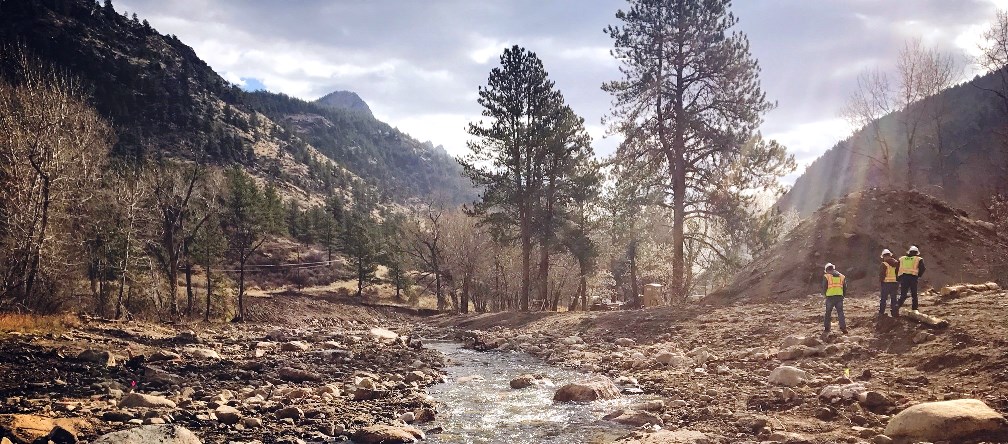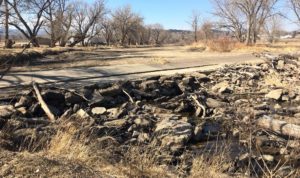In Loveland, Colorado (near Denver), $4 million project is underway to both restore wildlife habitat, reconnect public greenspace and boost community resilience to extreme weather events.
The work focuses on the riparian areas of the Big Thompson River.
Now, in January of 2019, the Big Thompson Watershed Coalition (BTWC) has secured a grant through DOLA’s CDBG-DR Ditch Improvement program for a project at the Rist-Goss Ditch.
BTWC is a collaborative group of government, private landowners, and non-profit organizations working to implement restoration of the Big Thompson River after the Colorado flooding in September 2013. BTWC seeks to obtain resources for long-term restoration projects and facilitates communication between agencies, stakeholders and landowners.
BTWC’s vision is “A healthy and resilient Big Thompson Watershed that benefits the fish, wildlife, and people it serves.” Their mission is “To protect and restore the ecological health of the Big Thompson Watershed for the use and enjoyment of our community today and for future generations.” In other words, it’s definitely a Restoration Economy organization.
The Rist-Goss Ditch is located in Loveland, just upstream of the Namaqua Bridge. Restoration ecologists have redesigned a 2-mile stretch of the river to revitalize fish habitat.
But another goal is the work is resilience: they are giving the river more room to expand during floods, thus diffusing the force of the flow to be less destructive.
“This whole section of the river is going to have a nice community benefit especially with so much public access,” said Shayna Jones, director of the Big Thompson Watershed Coalition, which is working with two property owners and several contractors on the improvements. “The project has a lot of community impact.”
Work at the site will include removing the existing diversion structure, relocating it upstream and replacing the dam with a series of smaller, more natural-looking structures that will allow for improved fish passage.
The initiative will be closely coordinated with the Coalition’s Rossum-Wilson river restoration project and Larimer County’s project to replace the Namaqua Bridge.
All photos courtesy of the Big Thompson Watershed Coalition.


